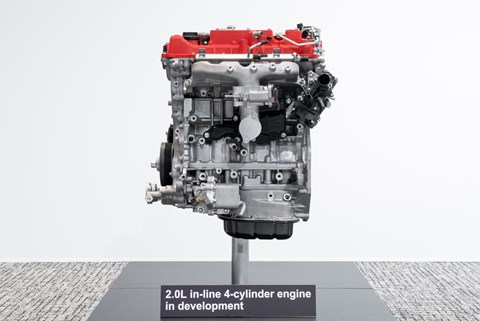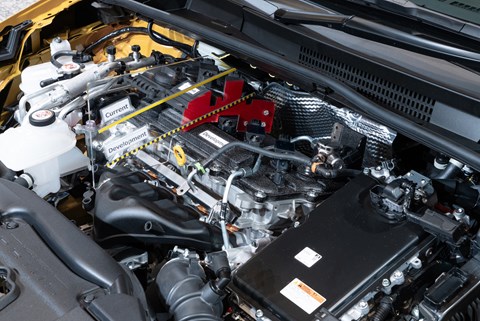► GR to lead Toyota’s engine development
► New four-cylinders will be for performance cars
► As well as motorsport, and even conventional Toyotas
Toyota has confirmed that its performance division is developing a new series of engines. As well as motorsport and performance car purposes, Bart Eelen, head of TGR and motorsports, has confirmed to CAR that these engines will also make their way into conventional Toyotas, too.
That means an engine designed, developed and engineered by Gazoo Racing, could end up in a next-generation Corolla or RAV4 – just as much as a WRC car or GR performance vehicle.

‘We’re in the process of developing a brand-new family of four-cylinder combustion engines with both 1.5 and 2.0-litre capacities,’ says Matt Harrison, chief corporate officer for Toyota Europe. ‘These engines will feature new technologies and new thinking. For instance, they will have a shorter piston stroke that allows them to be much more compact. That allows us more freedom for our designers and engineers when it comes to packaging.’

‘New ICE engines are pretty rare these days, but we really wanted to do this,’ says Eelen. ‘The block is super compact, and the centre of gravity is super low – and the engine combines both efficiency and performance.’
These engines are designed to run on conventional petroleum and, given GR’s pursuit of performance, reports suggest power outputs reaching 400 metric horsepower. The engines, however, can also be combined with e-motors to create both full and plug-in hybrids. They are also being developed to run on hydrogen combustion fuel, as part of Toyota’s ongoing development of that fuel type.

The current mule for engine development is Toyota’s GR Yaris M Concept, where the M stands for ‘midship.’ The model has brought on a bunch of speculation as to whether Toyota will build a new MR2 or Celica, to which Harrison smirks and says ‘we’ll have to wait and see about that.’ The prototype engine, codenamed G20E, will be competing in a Super Taikyu race in 2025 as part of its engineering and development program.
It’s an interesting perspective. Usually in the car world, the engine development process is the other way round; the main company develops the engine for the performance arm to then upgrade. That must mean a lot of pressure.
‘It goes back to Toyota’s idea of using motorsport as a test bed and as a way to develop new things,’ says Eelen. ‘I think that’s something that Akio [Toyoda, former head of Toyota] introduced into the company. Toyota hadn’t thought that way before.’